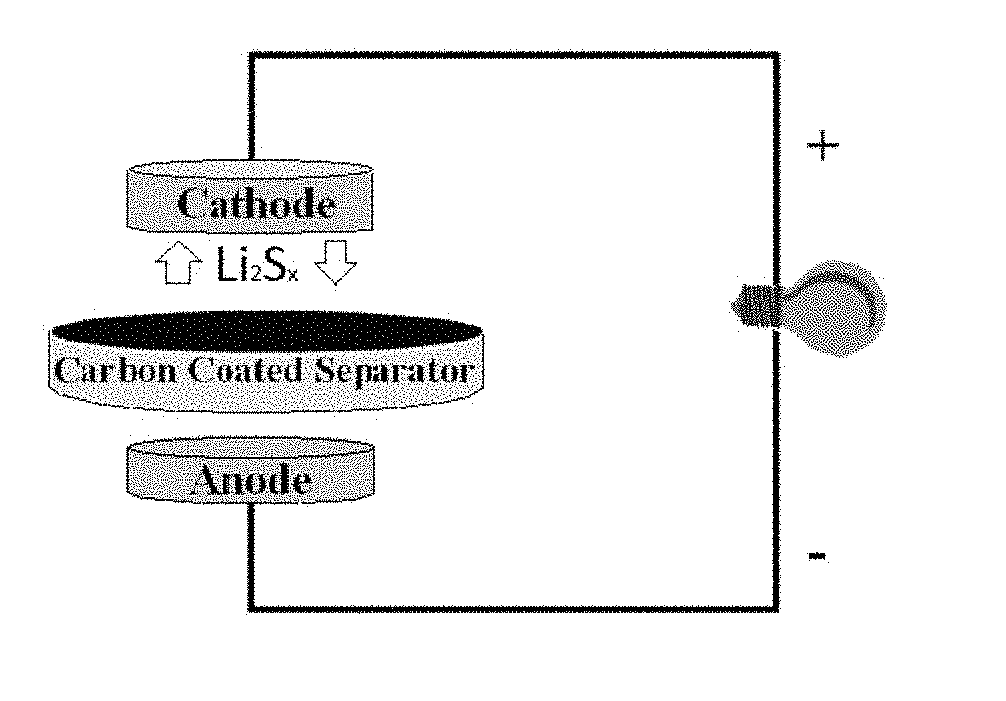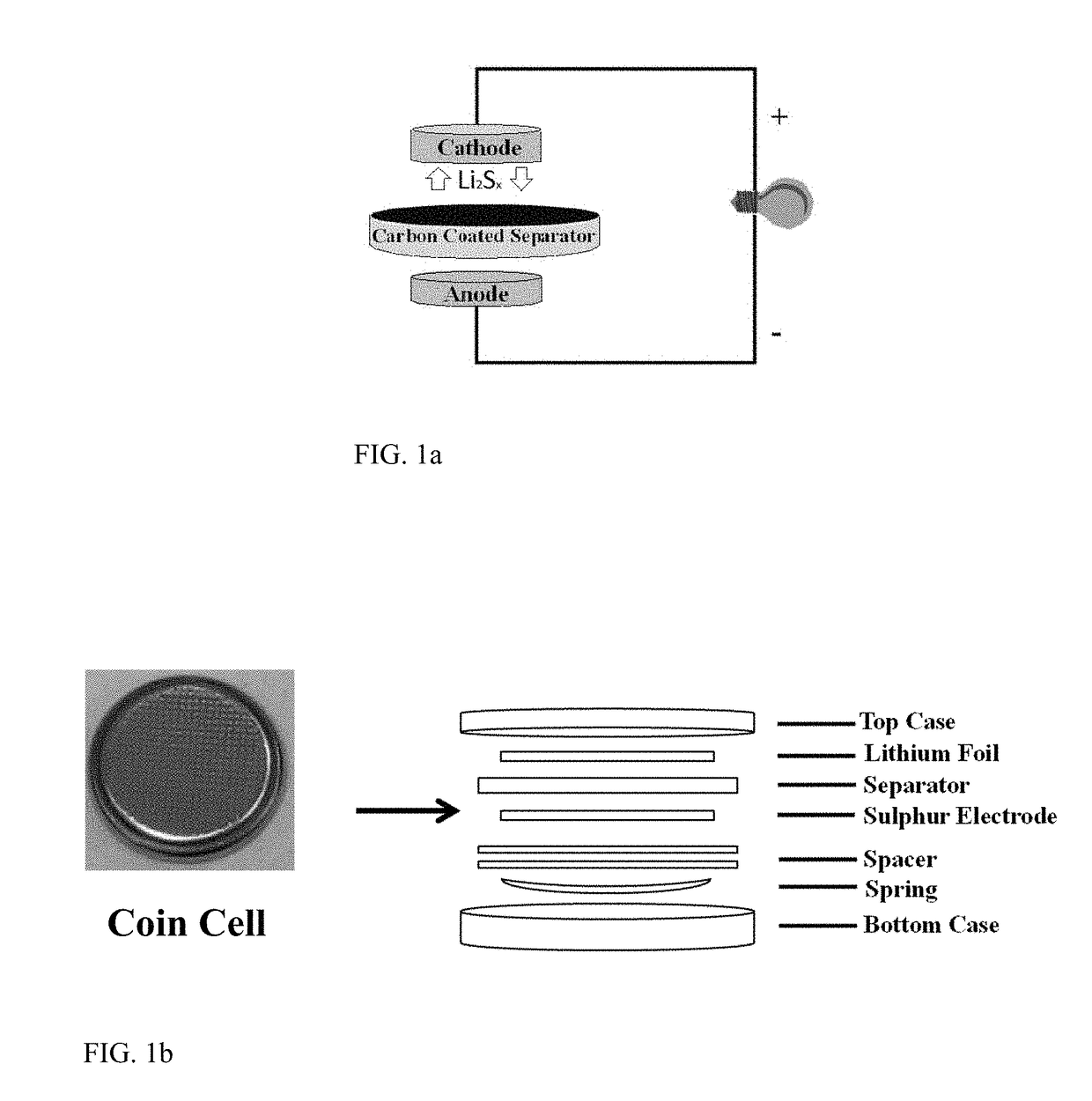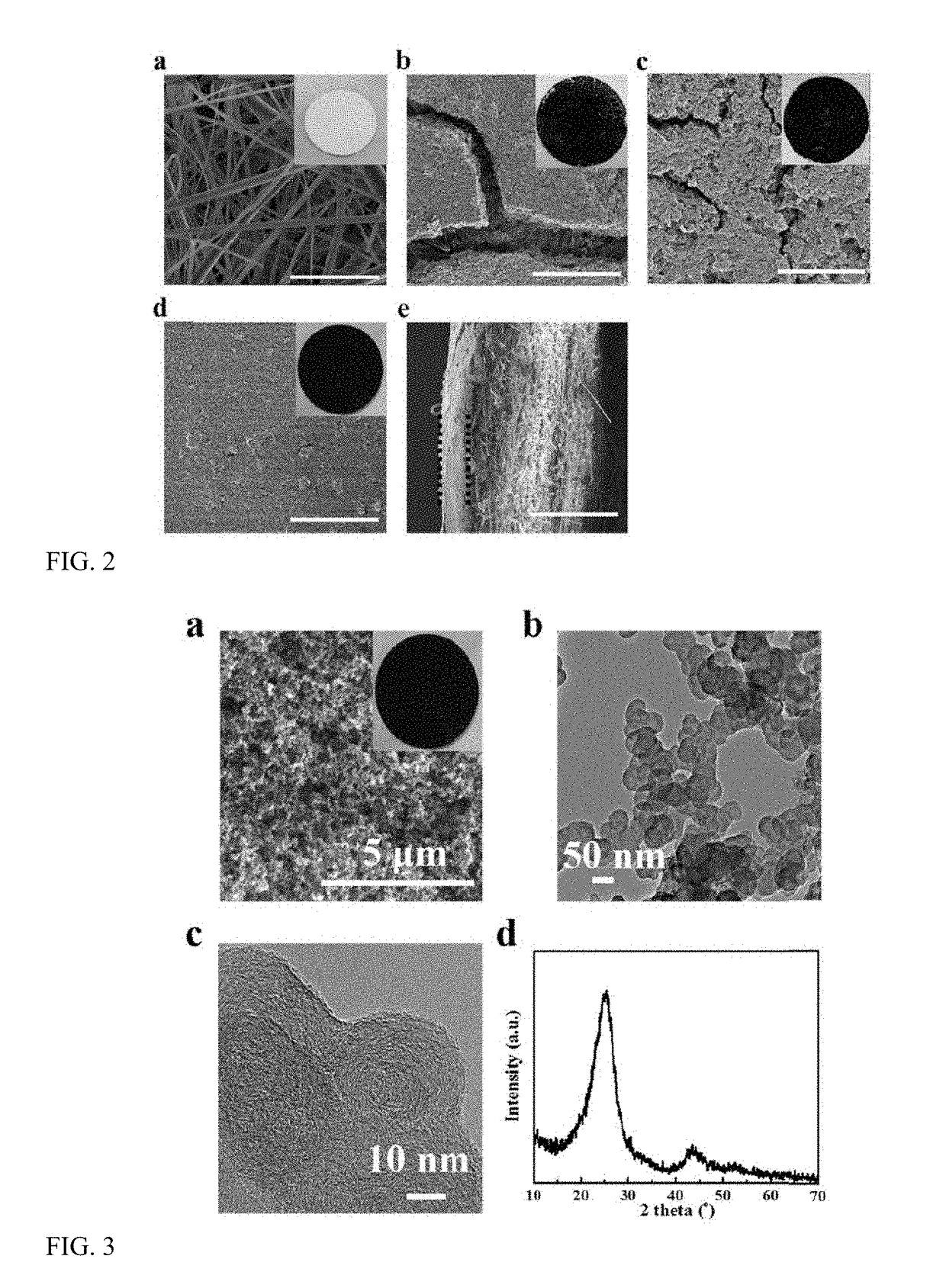Li-S Battery with Carbon Coated Separator
a technology of carbon coating and separator, which is applied in the direction of cell components, sustainable manufacturing/processing, and final product manufacturing, etc., can solve the problems of reducing the capacity of the battery, poor kinetics and low rate capability of the battery, and low porosity of the membrane with liquid electrolyte, so as to minimize capacity loss, reduce the migration of polysulphide intermediates, and reduce the effect of capacity loss
- Summary
- Abstract
- Description
- Claims
- Application Information
AI Technical Summary
Benefits of technology
Problems solved by technology
Method used
Image
Examples
Embodiment Construction
[0071]FIG. 1a illustrates the schematic configuration of a Li—S cell with carbon-coated separator. Offset is taken in a conventional Li—S battery design with a Sulphur cathode and a Lithium anode and a separator in between as well as an electrolyte (not shown). The separator comprises a carbon coating on its surface for preventing dissolved Li2Sx (4≤x≤8) in the electrolyte to reach the anode. This follows the approach as disclosed in the aforementioned article by Yao et al. The cathode comprises a Sulphur surface towards the separator, wherein the Sulphur surface is provided without a carbon coating
[0072]FIG. 1b contains a photograph of the battery cell that was constructed in experiments for which results are presented below. In the assembly sketch, it is seen that the battery cell comprises an enclosure with a bottom and top casing between which the battery components are arranged in addition to a spring that presses the Sulphur electrode, the separator and the Lithium foil togeth...
PUM
| Property | Measurement | Unit |
|---|---|---|
| thickness | aaaaa | aaaaa |
| thickness | aaaaa | aaaaa |
| diameter | aaaaa | aaaaa |
Abstract
Description
Claims
Application Information
 Login to View More
Login to View More - R&D
- Intellectual Property
- Life Sciences
- Materials
- Tech Scout
- Unparalleled Data Quality
- Higher Quality Content
- 60% Fewer Hallucinations
Browse by: Latest US Patents, China's latest patents, Technical Efficacy Thesaurus, Application Domain, Technology Topic, Popular Technical Reports.
© 2025 PatSnap. All rights reserved.Legal|Privacy policy|Modern Slavery Act Transparency Statement|Sitemap|About US| Contact US: help@patsnap.com



